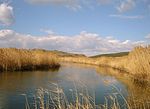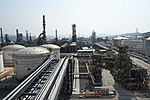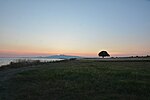Aliağa Wind Farm
Aliağa DistrictBuildings and structures in İzmir ProvinceWind farms in Turkey
Aliağa Wind Farm is an onshore wind power plant in Aliağa district of İzmir Province in western Turkey. The wind farm consists of four fields operated by different companies. A total of 83 wind turbines have an installed output power of 193 MW generating about 480 GWh a year.
Excerpt from the Wikipedia article Aliağa Wind Farm (License: CC BY-SA 3.0, Authors).Aliağa Wind Farm
Geographical coordinates (GPS) Address Nearby Places Show on map
Geographical coordinates (GPS)
| Latitude | Longitude |
|---|---|
| N 38.815 ° | E 27.007778 ° |
Address
35800 , Yalı Mahallesi
Turkey
Open on Google Maps






